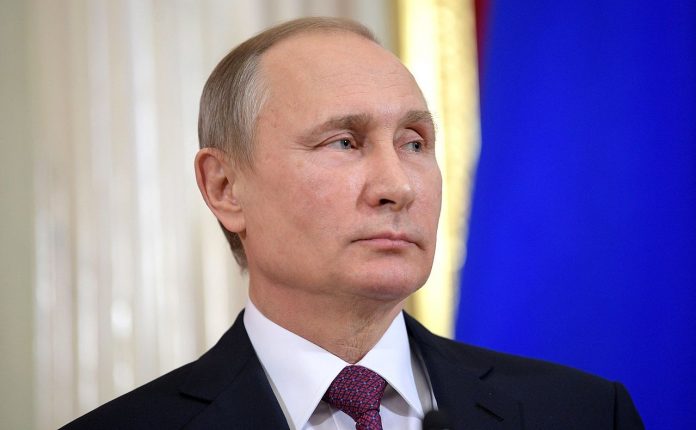Kiev authorities are reportedly actively preparing for the reintegration of Donbass with Ukraine. Even though the shelling on the front line still goes on, it is expected that the so called Steinmeier Formula – a tentative agreement that was recently signed by Ukraine, Russia, European mediators, and representatives of the self-proclaimed Donetsk People’s Republic and Lugansk’s People’s Republic – will be at least partially implemented.
Two major ceasefire agreements have been singed since the conflict erupted in 2014, but they were never fully implemented. The Minsk Protocols, signed in Belarusian capital in 2014 and 2015, had a significant outcome, though. In the summer of 2014 Russia-backed Donetsk People’s Republic was in the middle of its military offensive against forces loyal to the government in Kiev. The DPR had an opportunity to capture Mariupol – strategically important industrial port city with a population of around 450,000 – but the Kremlin made its proxies sign the Minsk Agreement instead. At the time, the city was almost abandoned by Ukrainian military, and was practically left to various volunteer battalions to defend it. Still, Moscow ordered its proxies not to capture Mariupol.
Some analysts believe that the Kremlin, back then, had certain deals with powerful Ukrainian billionaire oligarch Rinat Akhmetov, who owned steel plants in Mariupol. Leaving the city under Ukrainian control, the Kremlin provided Akhmetov the opportunity to keep using the strategic port for his own business interests. Ever since, the port became a tool for contraband, money laundering and profitable business for both Ukrainian and Russian oligarchic groups. For instance, after Ukraine imposed economic blockade on the Donbass territory held by pro-Russia forces in 2017, Kiev effectively lost control over the important Donbass mines. Since the mines are located in Donetsk People’s Republic, the authorities of this self-proclaimed entity now export coal to Russia, and then Ukraine buys it from Russia and exports it via the port of Mariupol.
If both sides fully implement the Steinmeir Formula, such lucrative businesses will naturally come to an end. That is why many “war parties”, especially on the Ukrainian side, are strongly opposing the agreement. Radical Ukrainian nationalist held several protests accusing Ukrainian President Volodymyr Zelensky of betrayal of the country by signing the Steinmeir Formula. The document, named after German Foreign Minister Frank-Walter Steinmeier, envisages that the Donbass should get a special self-governing status after it holds elections under Ukrainian legislation. In addition, it requires from the Russia-backed Donetsk People’s Republic and Lugansk’s People’s Republic to allow Ukraine to reinstate full control over its border with Russia. If Moscow and its proxies implement this part of the agreement, Russia will de facto capitulate to the West and its clients in Kiev, as it will effectively lose control over the region.
Many Donbass residents fear that the Kremlin might leave them in the lurch. On the other hand, some of them write on social networks that it is better to have a horrible end, than a never ending horror. Presently, they live under constant shelling in unrecognized states where average monthly salaries are slightly above $100, and prices can be compared to those in Moscow. Still, many people living in the region strongly oppose any ideas of reintegration into Ukraine. However, since they are completely depended on Russia, they will not have any mechanisms to prevent such process if Moscow decides to end the conflict and return the Donbass to Ukraine. In that case, Russia might face hundreds of thousands of refugees who will feel betrayed by the Kremlin.
The self-proclaimed Donbass republics are fully integrated into Russian economy. Russian ruble already replaced Ukrainian hryvnia as the national currency, and Russian President Vladimir Putin recently signed a decree which makes it possible for residents of the DPR and LPR to obtain Russian citizenship under a simplified procedure. However, the process of “passportization” goes pretty slow, and so far only a few thousands out of roughly three million people received Russian passports. In the long term, if all the residents of the self-proclaimed DPR and LPR become citizens of the Russian Federation, the situation will be quite similar to South Ossetia and Abkhazia before Moscow recognized their independence in 2008.
According to former Ukrainian President Petro Poroshenko, what Moscow aims to achieve is to form a new Pridnestrovie, also known as Transnistria – a breakaway state in the narrow strip of land sandwiched between Moldova and Ukraine. Russia-backed Transnistria and Moldova fought a war in the early 1990s which resulted in Transnistria’s victory and the truce that holds to this day. At this point, the West does not seem interested in another frozen conflict. That is why French President Emmanuel Macron recently put harsh pressure on Russian leader Vladimir Putin to end the war in the Donbass.
Since the region will unlikely get the same status as Pridnestrovie, the Kremlin will have to find a way to avoid humiliation while returning the territory to Ukraine. According to some reports, President Putin apparently ordered Russian media to change their negative rhetoric towards Ukraine. At the same time, Ukrainian police are preparing for reintegration of the Donbass, and the country’s Foreign Minister Vadym Prystaiko said that Ukraine should reestablish train connection with the DPR/LRP controlled territory. In addition, Ukrainian authorities recently opened a temporary bypass bridge in the village of Stanitsa Luganskaya, which is a link between Lugansk People’s Republic and Ukraine. The temporary bridge is expected to work for the next two months until the destroyed main bridge has been rebuilt.
Such actions signalize that the process of gradual reintegration of the Donbass into Ukraine might start soon. It remains to be seen if Ukrainian “war parties” will manage to prolong the conflict, and how far the Kremlin is willing to go in returning the territory to Kiev.
Image credit: Kremlin.ru [CC BY 3.0], via Wikimedia Commons
The views and opinions expressed in this article are those of the author and do not necessarily reflect the official policy or position of The Geopolitics.

The author is a Serbian freelance journalist. He writes for several publications such as CGTN, Geopolitical Monitor, Global Security Review, International Policy Digest and Global Comment. Nikola also regularly contributes for YouTube geopolitical channel KJ Vids. He covers mostly Russia, Belarus and Ukraine.


